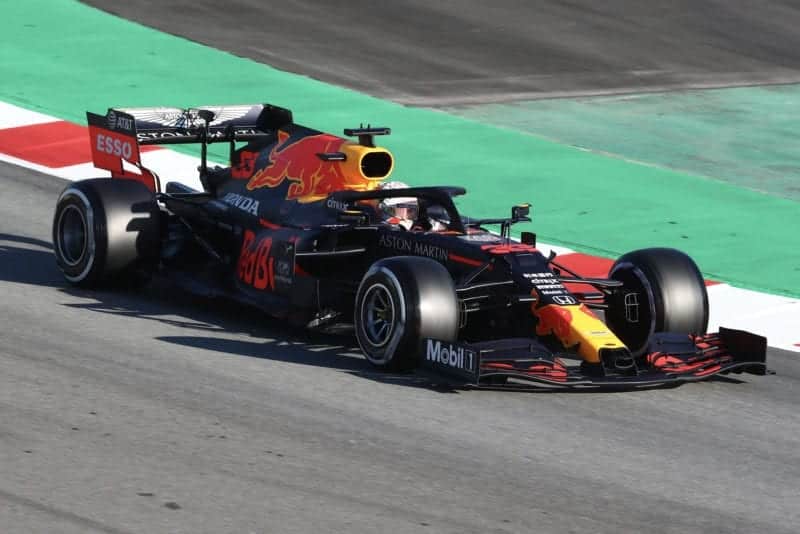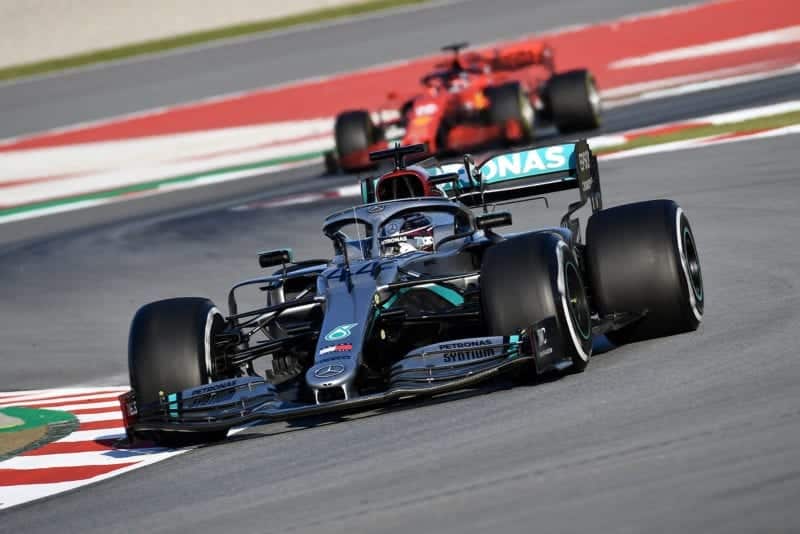This is the first level of filter from the headline numbers. However, we need to treat this list with caution.
These are simply the lap times that we know each car demonstrated itself to be capable of.
Not all of those teams will have gone for their ultimate single lap time and almost certainly will not have had a uniform fuel level between them when their best laps were set.
Ferrari, for example, spent both weeks conscientiously trying to fully map its car’s loadings, seeking to establish good correlation with its simulation tools. Specifically, it was seeking to avoid the misleading picture it – and everyone else – took from last year’s equivalent test.
Hindsight suggests that last year’s flattering picture came from its understeer allowing it to generate front tyre temperatures that its rivals were struggling to reach on a very cool track. And even then, Mercedes was within hundredths of Ferrari’s best time by the end of that test.

Verstappen appeared to sabotage one of his fast runs
Grand Prix Photo
So this time around, Ferrari appeared to be delving more deeply into how the lap time was being delivered, beyond just the simple fact that it was slow down the straights and fast through the slow corners (the opposite of last year) with its higher downforce car.
Similarly at Red Bull, Max Verstappen appeared to deliberately sabotage a fast lap time towards the end of a run, braking hard just short of the timing beam.
Then there’s the relatively small gap between the slowest and the fastest at around 1.5sec – which would be untypical of the last few seasons, suggesting that the Mercedes time is not its ultimate either.
Race simulations
In other words, treat those times above as only the most approximate of guides. Where we can read the times with a greater degree of confidence is in the race simulations.
Not every team did one. But Mercedes, Ferrari, Red Bull, Racing Point, McLaren and AlphaTauri did. In a race sim, the comparison between cars should be less polluted by variation in fuel loads – as the cars are fuelled for the full race distance at the beginning and don’t refuel at the tyre stops.
The tanks in the cars are only just big enough to take the fuel load needed to complete a race, so any race sim comparison can be assumed to have been on near enough equal fuel loads. Thus, a truer – but still not definitive – picture tends to emerge.
This is how it looks on the race simulation runs of Mercedes, Red Bull, Ferrari, Racing Point and McLaren:
| 1 | Mercedes | 1hr 29min 26sec | 66 laps in |
| 2 | Ferrari | 1hr 30min 02sec | (+34sec to Mercedes) |
| 3 | Red Bull | 1hr 30min 09sec | (+41sec to Mercedes) |
| 4 | McLaren | 1hr 30min 59sec | (+93sec to Mercedes) |
| 5 | Racing Point | 1hr 31min 10sec | (+104sec to Mercedes) |
| 6 | AlphaTauri | 1hr 31min 55sec | (+149sec to Mercedes) |
As we can see from that, the Ferrari is much more competitive than the single lap headline numbers suggest. It’s still trailing Mercedes, but handily beats Red Bull and puts almost a lap on the ‘Class B’ pace-setters McLaren and Racing Point.
Adjust for specific knowledge
But although the race runs give a more refined picture than the single lap times, they’re still polluted. They were, for example, run on different days.


